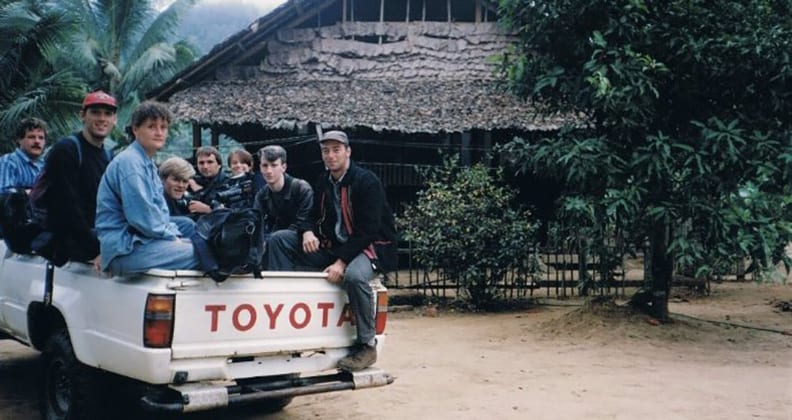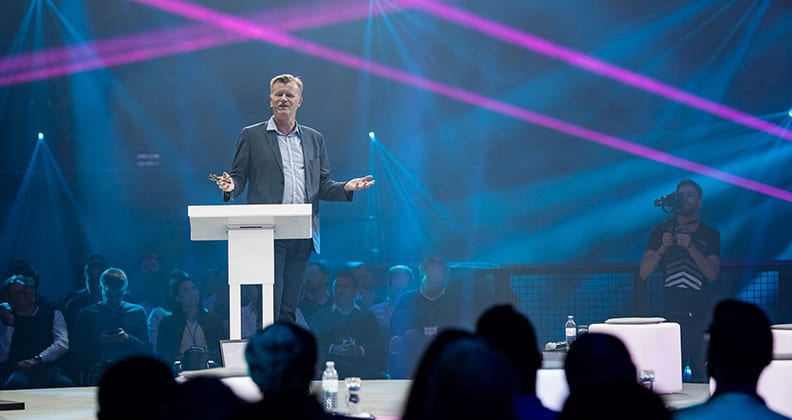Carving a diverse career in journalism spanning 23 years, alumnus Michael Casey has covered the Myanmar civil war, written for the Wall Street Journal, published four books and featured in a Netflix documentary on Bitcoin.
Casey is now based in New York and is a Senior Advisor with MIT Media Lab, where he creates blockchain related products for developing countries. As a blockchain advisor and consultant, he educates people about the complex yet fascinating potential of cryptocurrency, and its disruption on the global financial system.
Curtin caught up with Casey during his recent visit to Perth visit to ask him about his prolific career in journalism and his foray into all things blockchain.
Curtin: Why did you decide to study journalism at Curtin?
Casey: I wanted to be a journalist since I was 15 years old, but I was convinced I didn’t have what it took, so at age 17 I eschewed journalism for an accounting degree at UWA and was eventually hired as an auditor. I found the job soul destroying and quit within a year to go travelling.
I travelled to Thailand and taught English. It was in Thailand where I met journalists and started to write about my experiences in the country. I was especially interested in the plight of Myanmar’s refugees and rebel students during the civil war. I soon realised there was nothing more I wanted to do than become a journalist.
Curtin offered a Graduate Diploma in Journalism at this time, so I applied and was accepted. It opened up a whole new world for me.
Curtin: What skills did you learn in your Curtin degree have you found most useful to you throughout your career?
Casey: I learned how to conceive ‘the lede’, which is how you distil the most important piece of information in a catchy, provocative way, into the first one or two sentences of an article.
Curtin: You have worked in many countries around the world including Indonesia, Argentina and the US – how has this global exposure and experience shaped you as a professional?
Casey: I would say it has been the defining feature of my career. It has helped me to understand that the perspective you might have inside one country is the result of the cultural and other factors that shape it, while there is a completely different viewpoint to be had from a different culture.
I’ve also recognised that there is a global interconnectedness to the world economy that influences everything in the digital age and that people have to be aware of its impact.

Curtin: What has been a significant highlight of your career to-date?
Casey: The highlight for me was writing and publishing my first book, Che’s Afterlife, about the iconic image of Che Guevara. Not only because the book received a very positive review from former chief critic of The New York Times, Michiko Kakutani, but also because the subject matter was something quite removed from my day job as Bureau Chief of the Dow Jones in Argentina.
Curtin: What advice would you give students currently studying journalism?
Casey: Embrace your skill as a storyteller; there is demand for it outside of journalism.
Curtin: What is cryptocurrency and blockchain technology, and how are they challenging the global economic order?
Casey: Blockchains offer a new way to record exchanges of sensitive data, the most important aspect of human exchange systems. Rather than relying on centralised record-keepers to resolve the trust barriers between us, such as banks, blockchain technology offers a decentralised mechanism that no one controls. This challenges the global economic order because it enables, for the first time, a foundation for individuals and businesses to trade directly with each other.
Curtin: Blockchain technology and cryptocurrency remain a challenging concept for some people. How do you address this as an author, advisor and public speaker of blockchain technology?
Casey: I focus on convincing my audience that this technology represents a paradigm change, that they can’t ignore the developments in this world.
Curtin: Finally, what advice would you tell your 17-year-old self if you could?
Casey: Never be afraid to ask. All they can say is no.



